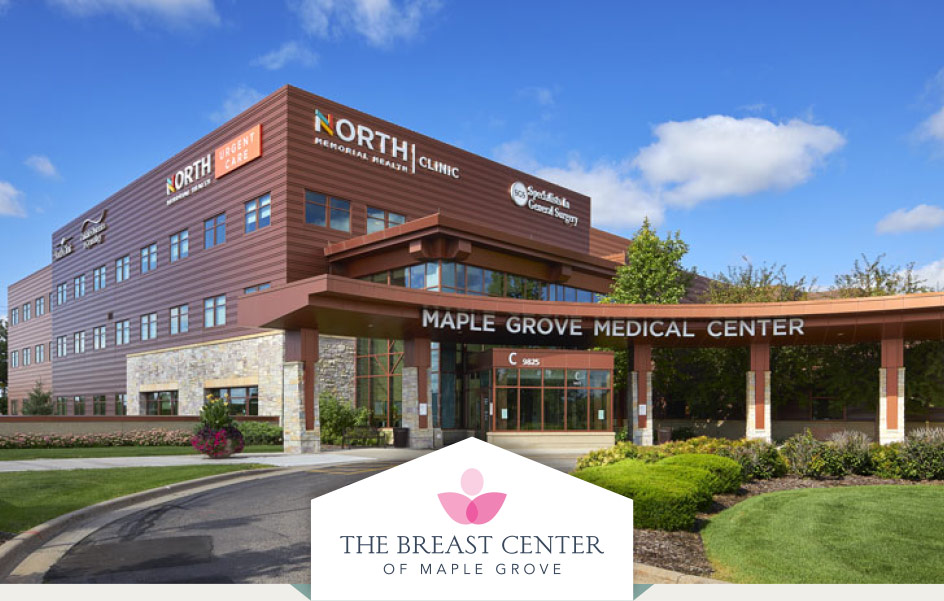Frequently Asked Questions:
Answers & Reassurance
Patient education and answers to our patients' most frequently asked questions.
FAQs
Why choose The Breast Center of Maple Grove for screenings
- You can feel confident about being screened at The Breast Center of Maple Grove because the expert technologists and radiologists who perform and interpret your tests specialize in breast imaging.
- We use leading-edge technology, like 3D mammography, and are actively engaged in research to improve breast cancer early detection with imaging.
- We are a comprehensive breast center so if you need diagnostic mammography, ultrasound, breast biopsy, or wire/seed localization for surgery, it is all in one location.
Who interprets the results?
Minneapolis Radiology’s diagnostic radiologists will read and interpret your images at The Breast Center of Maple Grove. They are board certified by the American Board of Radiology.
Breast self-exam and awareness
You can help detect breast cancer by being aware of how your breasts normally feel and seeing your health care provider about any changes you notice. Many breast cancers today are self-detected.
In the United States, for every 10 women diagnosed with breast cancer:
- Six were diagnosed because they had a screening test, like a mammogram, that detected abnormal tissue, even though they had no signs or symptoms.
- Four were diagnosed because the woman or her health care provider felt a lump or noticed another sign or symptom and had it evaluated.
How should I check my breasts?
There’s not one right way to examine your breasts. Just become familiar with how the tissue usually feels. Research shows that teaching women a particular method of breast self-exam doesn’t improve results. Trust yourself.
What am I feeling for?
Pay attention if:
- You feel a new or different lump, mass, or thickening in your breast—especially if it lasts more than a month or two in the same spot.
- You have other breast symptoms that concern you and you’d like a health care provider’s help to evaluate them.
Do I need a screening mammogram?
Screening mammograms detect breast cancer in the great majority of women who have the disease but don’t feel a lump in their breast. By detecting cancer before it can be felt, mammograms save lives.
- Guidelines from the National Comprehensive Cancer Network, American College of Radiology & Society of Breast Imaging recommend women begin screening mammograms at age 40 and have one every year if they are at average risk for breast cancer.
This recommendation is not right for everyone.
- If you are at higher-than-average risk, you may need screenings earlier and more often.
- Some women may choose to start screening later or be screened less often.
Organizations like the American Cancer Society and the United States Preventive Services Task Force differ on the age to start screening and whether to have screenings every year or every two years.
- What is most important is that you have screenings regularly at an interval that matches your risk, values, and preferences.
- Your health care provider can assess and explain your risk and help you decide on the screening schedule that’s right for you.
What are the risks of getting a mammogram?
For most women, the benefits of getting a mammogram outweigh the risks. But, like all tests, mammograms have some risks:
- Most breast cancers can be seen on mammograms, but some cannot. If you have breast concerns, talk with your doctor or breast health specialist about your symptoms. It is important to do this even if you just had a mammogram that did not show any problems.
- A mammogram can result in a “false alarm.” A false alarm is when a mammogram shows a possible problem that turns out to not be cancer after more tests are done. These tests may include more imaging exams or having a small tissue sample (biopsy) taken for testing in the lab.
What Are the Symptoms of Breast Cancer?
Different people have different symptoms of breast cancer. Some people do not have any signs or symptoms at all.
Some warning signs of breast cancer are—
- New lump in the breast or underarm (armpit).
- Thickening or swelling of part of the breast.
- Irritation or dimpling of breast skin.
- Redness or flaky skin in the nipple area or the breast.
- Pulling in of the nipple or pain in the nipple area.
- Nipple discharge other than breast milk, including blood.
- Any change in the size or the shape of the breast.
- Pain in any area of the breast.
Keep in mind that these symptoms can happen with other conditions that are not cancer.
If you have any signs or symptoms that worry you, be sure to see your doctor right away.
What Can I Do to Reduce My Risk of Breast Cancer?
Many factors over the course of a lifetime can influence your breast cancer risk. You can’t change some factors, such as getting older or your family history, but you can help lower your risk of breast cancer by taking care of your health in the following ways—
- Keep a healthy weight.
- Exercise regularly.
- Don’t smoke.
- Don’t drink alcohol, or limit alcoholic drinks.
- If you are taking, or have been told to take, hormone replacement therapyexternal icon or oral contraceptivesexternal icon (birth control pills), ask your doctor about the risks and find out if it is right for you.
- Breastfeed your children, if possible.
- If you have a family history of breast cancer or inherited changes in your BRCA1 and BRCA2 genes, talk to your doctor about other ways to lower your risk.
Staying healthy throughout your life will lower your risk of developing cancer, and improve your chances of surviving cancer if it occurs.
